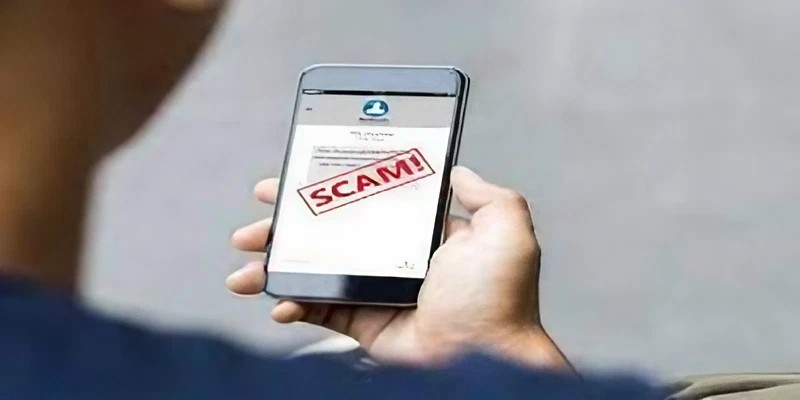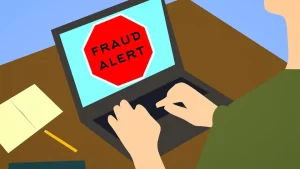“US9514961195221” USPS Text Message Scam & How To Avoid It

Because of its ease of use and convenience, Internet shopping has become a billion-dollar industry. Consumers across the globe are ready to wait days for their favorite products to be delivered to their doorsteps and have come to rely on online retailers for even the most basic needs.
Sadly, con artists have begun to use this dependency to their advantage by texting potential victims. Continue reading to find out what to do if you’ve fallen victim to the US9514961195221 text scam or something similar to protect your hard-earned money from being misused.
Text Message Scam: What Is It?
Similar to vishing, a text message scam (sometimes called “smishing”) is a type of fraudulent activity carried out by con artists using text messaging. Fraudsters trick people who receive unsolicited mail to click on a link that leads to a website, using USPS as an example. Messages appear genuine.
When a user clicks on the link, they are taken to a website that appears legitimate but is actually a scam used to collect users’ personal data. It is possible to extract information about the user, including name, address, date of birth, password, and credit card details. Scammers then take advantage of this knowledge to steal hundreds of dollars while their victims are completely unaware.
Breaking Down The “US9514961195221” Scam

Source: My Antispyware
Many customers have recently reported receiving texts informing them that there was a problem with the delivery of their order from the US Postal Service. The letter states that they will need to provide more personal information to receive their shipment and ensure it reaches their home on time.
The tracking number US9514961195221, which is actually a fake number, is written on the message.
The writing style of the SMS message creates an air of immediacy, leading users to believe that this is a serious problem that needs immediate attention. Because of this, a lot of individuals might click the offered link without thinking, which will lead them to a phony USPS website.
Since it uses the same logo and appearance as the official USPS website, it may seem completely legitimate at first glance. But if you look more closely, you will notice some flaws that make it unique.

Source: Trend Micro
Upon opening the website, the user will begin requesting personal information and credit card information in order to receive payment for redelivery. This data can be used for identity theft, fraudulent transactions, or other nefarious purposes. It can even be sold to criminals on the dark web.
Occasionally, the message may request that the client call a specific number to resolve their issue. Fraudsters may try to get people to install a remote control tool that they pass off as a computer diagnostic application or pay for fictitious support services.
It’s important to understand that once scammers gain access to a computer, they can compromise critical data, steal personal information, and install malware such as Trojan horses, spyware, or ransomware. are
In this particular scheme, scammers are pretending to be the USPS, which is run by the US federal government and is one of the most famous organizations in the world. It is, therefore, easier for fraudsters to execute a money-making scam because most recipients of such a communication will trust that the required information will be kept private.
Tips On Avoiding Being A Victim Of US9514961195221 SMS Scam

Source: Hindustan Tech
By keeping an eye on a few common qualities, you can guard against being a victim of scams – Hindustan Tech.
Ultimately, the key to avoiding SMS scams like US9514961195221 is to be careful. Here are some things to watch out for when you receive a questionable text message.
Generic Greeting
The first on the list of How To Avoid “US9514961195221” Scam is Generic Greeting. It may be a sign of dishonesty if the text message you receive begins with a generic greeting that calls you “user” or “customer.” Based on the information you provide when signing up, most companies have access to your full name and will use it in all communications with their clients.
While there’s no obvious reason to mark a text message as a smiley, it can be an important factor, so it’s best to approach it with caution.
Directing Towards A Shortened Link
The most common trick scammers use to trick people is to provide them with a link that promises to solve their problem. These URLs can take you to fake websites that mimic the real ones. You can still be infected even if you click on the link and then decide not to provide any personal information because malware such as Trojan horses and spyware can still be downloaded in the background.

Source: InterNextX
An example of URL truncation Internext X
In general, stay away from clicking on links and instead go directly to the website and use the search function to find the page you’re looking for. You can be sure that your communication is authentic this way. If you face any problem, you can contact the customer service agent and solve any problem immediately.
Sense of Urgency
Text message scams often use remarks that are meant to convey strong emotions and prompt responses. To avoid taking too much time for them to consider the rationale of the communication, the aim is for the receiver to react quickly to it.
Fraudsters often use fear to trick victims into believing they have done something wrong that, if not corrected immediately, will cost them a significant amount of money.
When you receive a text message with the words “urgent” or “urgent,” it may be a good idea to take a closer look at the message before acting immediately. This way, you can stay out of trouble and know exactly what to do next.
Tracking Number
Since victims have already reported the tracking number US9514961195221, it has been logged and flagged as suspicious. Therefore, any message referring to this number is undoubtedly fraudulent and should not be trusted.
On the other hand, con artists may also use a different, fake tracking number to trick their victims. Go to USPS’s tracker tool at https://tools.usps.com/go/TrackConfirmAction_input and enter the suspicious tracking number there to make sure it’s not. If the number is incorrect, a notice indicating “Status Not Available” will appear on the screen.
Grammar and Spelling
Professional companies such as the United States Postal Service (USPS) employ a large number of people and provide a very comprehensive service. Technical errors, such as incorrect grammar and spelling, can indicate something more sinister in a message that appears to come from a trusted source.
Make sure you read any text carefully to make sure you don’t miss any mistakes or haste made by a scammer.
What Should I Do If I Receive A Fake Message?

Source: Iperius Backup
Judging by how often there are attempts at a smile, there’s a good chance you’ve encountered a text message scam. If, after completing the aforementioned steps, you believe that a communication you received is fraudulent, there are steps you can take to safeguard your data and financial information.
- Never click on any link.
- Delete the message first from your phone’s inbox and then from the Recently Deleted section.
- Block the phone number that sent you the text.
- Verify that no malware has been installed on your phone by doing a security check.
- Update to the most recent iOS or Android version on your phone for optimal protection. Creation and information.
- Submit a complaint to the USPS to identify and stop the source of these fraudulent letters. To make sure others don’t fall into the same trap, send an email to [email protected] with a screenshot of the text message and the number it was sent from.
That’s it for the post of “US9514961195221” Scam.
ALSO READ:
- How to Activate Disney Plus
- Plagiarism Checker Tools
- Top Paraphrasing Tools
- Longest Flying Drones
- How to Open HEIC Files in Windows or Convert Them to JPEG
- Super Mario 64 ROM Hacks
- Project Free TV Alternatives
Last Words
In the age of texting and smartphones, every meeting is judged based on how quickly and easily it can be completed. Our fast-paced lifestyles have given fraudsters the opportunity to take advantage of people who rely heavily on technology and make them hundreds of dollars with minimal effort. Currently, it is very important to exercise caution when communicating online to avoid becoming a “US9514961195221” scam victim.

